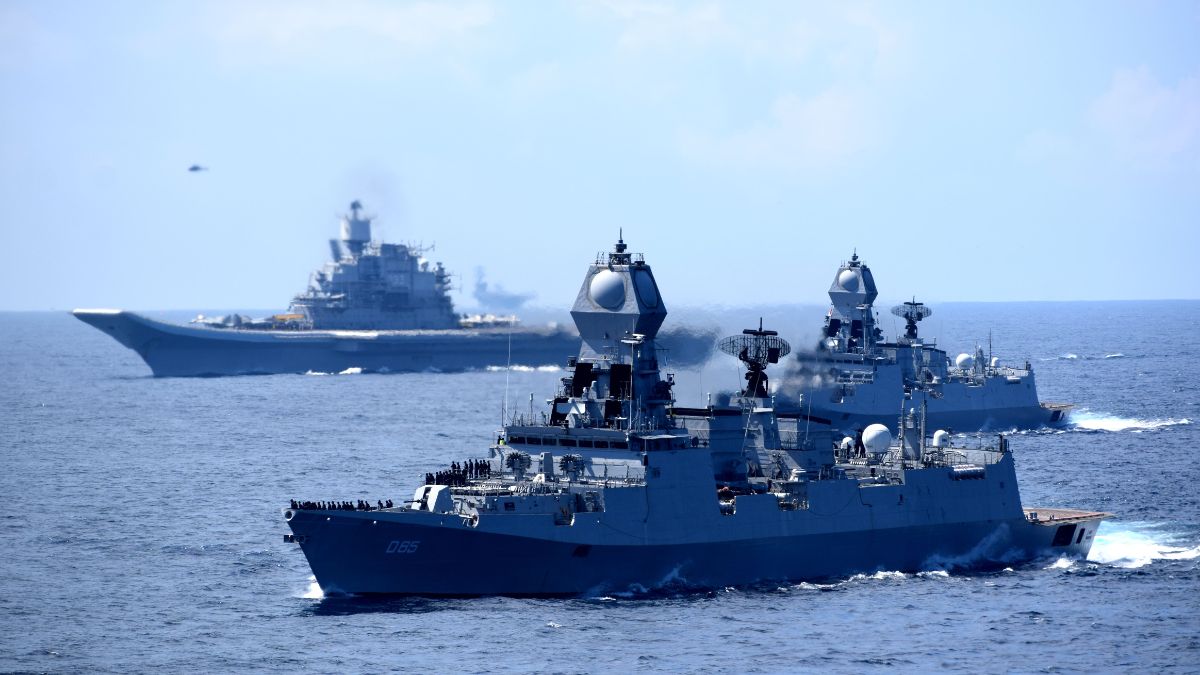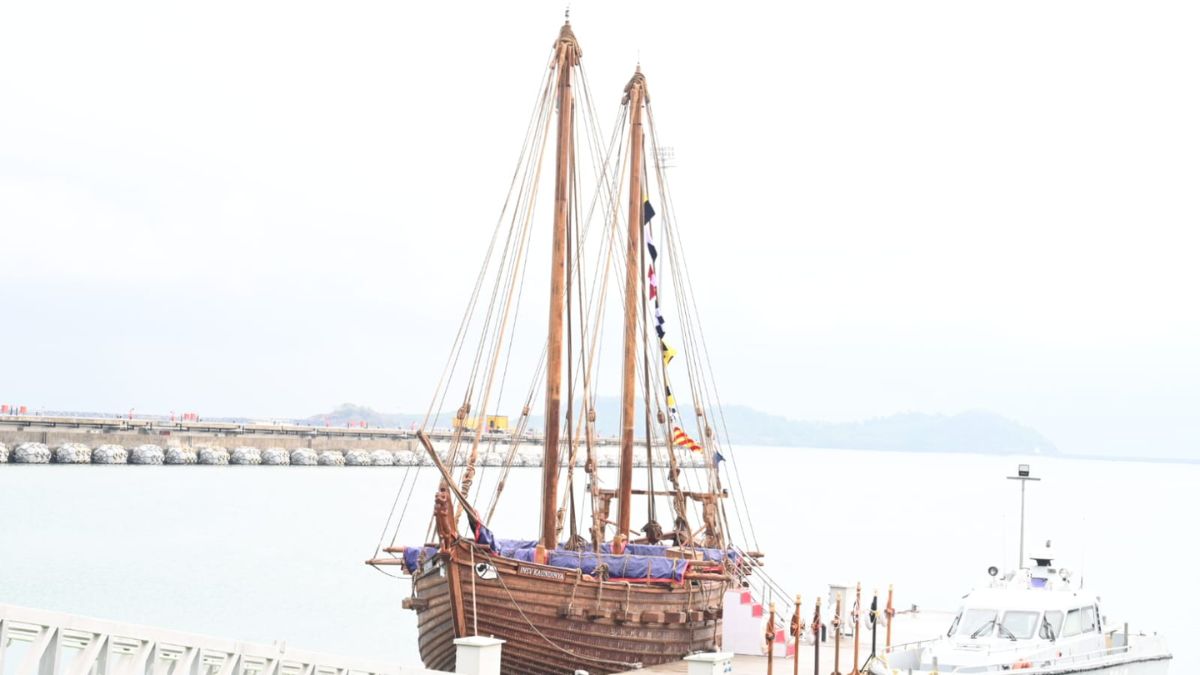Navy Setting Sail Towards Amphibious Ops As LPDs Get MoD Green Signal; MDL, Swan Defence To Design Them

These will be the biggest combat ships made indigenously after the INS Vikrant. Image courtesy: Indian Navy
Indian Navy is all set to sail towards its plan to have amphibious platforms, a project that was envisioned over two decades ago after the 2004 Indian Ocean tsunami. A major leap in this direction could soon enough as the Ministry of Defence has approved the domestic construction of four advanced Landing Platform Docks (LPDs) for the Indian Navy.
In a Rs 50,000 crore project that promises to transform India’s amphibious warfare and maritime power projection capabilities, the LPDs, each displacing over 30,000 tonnes, represent the biggest indigenous warships after the 45,000-tonne aircraft carrier INS Vikrant.
Designed for multi-domain operations, they will expand India’s ability to transport and sustain combined forces at sea, deploy troops on hostile shores, and provide critical humanitarian assistance and disaster relief (HADR) operations.
What makes these new LPDs a quantum leap for the Indian Navy?
Each of the four LPDs will measure around 220 metres in length and house 60 officers, 525 sailors, and up to 900 fully-equipped Army troops, along with vehicles, tanks, and artillery. Their amphibious capability includes two heavy-lift helicopters, 12 helicopters for special operations, and specialised landing craft to reach the shore. They will also carry onboard workshops to support other naval vessels at sea.
Crucially, the ships will not just serve as transporters as they will act as command hubs, coordinating UAVs, unmanned underwater vehicles, and providing fire support. Their modular design allows conversion into mobile logistics bases or even floating hospitals during crisis operations.
India’s indigenous shipbuilding ecosystem
It must be mentioned here that in a major industrial development, Mazagon Dock Shipbuilders Limited (MDL) has signed an agreement with Swan Defence and Heavy Industries to collaborate on the design and construction of the LPDs. MDL will bring its decades-long experience in ship design and integration, while Swan Defence will leverage its vast infrastructure.
“This partnership marks a new chapter in Indian shipbuilding,” said Capt. Jagmohan, CMD of MDL. “Through this collaboration, we aim to deliver world-class ships built in India, for India.” Swan Defence Director Vivek Merchant added, “Together, we aim to deliver technologically advanced, globally competitive platforms that will strengthen the Indian Navy’s blue-water capabilities.”
India-UK defence deal: How does it power Navy’s LPD project?
The LPDs are expected to be equipped with next-generation electric propulsion systems jointly developed under the India–UK defence industrial collaboration. Announced during the meeting between Prime Minister Narendra Modi and UK Prime Minister Keir Starmer in Mumbai on October 9, 2025, the collaboration aims at co-designing and co-producing marine engines that will power India’s next-generation naval fleet.
In August 2025, the Indian Armed Forces released a Joint Doctrine for Amphibious Operations, formalising the integration of maritime, air, and land elements under a unified command structure. The doctrine envisions establishing ‘amphibious force headquarters’ and creating dedicated ‘amphibious groups’ capable of deploying marine and Army battalions with supporting armour and artillery.
The induction of the LPDs will provide the backbone of this strategy by enabling simultaneous multi-theatre operations and extended sea control.
Is LPD project linked to India’s response to China’s maritime build-up?
China’s rapid naval expansion remains a key strategic driver for India’s LPD programme. The People’s Liberation Army Navy (PLAN) already operates six Type 071 LPDs and three amphibious assault ships, with growing deployments across the Indian Ocean, including bases and port visits in Gwadar, Djibouti, Sri Lanka, and potentially the Maldives.
India’s LPD project widens its operational arc to counterbalance Beijing’s blue-water ambitions and maintain credible presence across the Indo-Pacific.
From power projection and troop landing to disaster relief and humanitarian missions, these platforms offer unmatched versatility. Integration with drones, underwater vehicles, and space-based assets will enable the Navy to extend surveillance, electronic warfare, and cyber capabilities across vast maritime zones.






